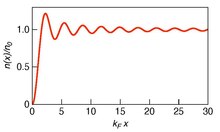https://en.wikipedia.org/wiki/Wigner_crystal
https://en.wikipedia.org/wiki/Metallic_bonding
https://en.wikipedia.org/wiki/Glass_transition
https://en.wikipedia.org/wiki/Electron_beam_texturing
https://en.wikipedia.org/wiki/Density_functional_theory#Electron_smearing
https://en.wikipedia.org/wiki/Electron-beam_freeform_fabrication
https://en.wikipedia.org/wiki/Vitrification
https://en.wikipedia.org/wiki/Melt_inclusion
https://en.wikipedia.org/wiki/Disodium_helide
https://en.wikipedia.org/wiki/Ionic_compound
https://en.wikipedia.org/wiki/Glass
https://en.wikipedia.org/wiki/Solid-state_chemistry#Melt_methods
https://en.wikipedia.org/wiki/Selective_laser_melting
https://en.wikipedia.org/wiki/Aluminium_smelting
https://en.wikipedia.org/wiki/Plasma_(physics)
https://en.wikipedia.org/wiki/Archaeometallurgical_slag
https://en.wikipedia.org/wiki/Metalworking
https://en.wikipedia.org/wiki/Atmosphere_of_Earth
https://en.wikipedia.org/wiki/Gas
https://en.wikipedia.org/wiki/Surroundings
https://en.wikipedia.org/wiki/System
A two-dimensional electron gas (2DEG) is a scientific model in solid-state physics. It is an electron gas that is free to move in two dimensions, but tightly confined in the third. This tight confinement leads to quantized energy levels for motion in the third direction, which can then be ignored for most problems. Thus the electrons appear to be a 2D sheet embedded in a 3D world. The analogous construct of holes is called a two-dimensional hole gas (2DHG), and such systems have many useful and interesting properties.
https://en.wikipedia.org/wiki/Two-dimensional_electron_gas
https://en.wikipedia.org/wiki/Local-density_approximation
https://en.wikipedia.org/wiki/Degenerate_matter#Degenerate_gases
https://en.wikipedia.org/wiki/Jellium
https://en.wikipedia.org/wiki/Free_electron
https://en.wikipedia.org/wiki/Plasma_oscillation#%27Cold%27_electrons
https://en.wikipedia.org/wiki/Free_electron_model
https://en.wikipedia.org/wiki/Local-density_approximation#Homogeneous_electron_gas
https://en.wikipedia.org/wiki/Thomas%E2%80%93Fermi_screening#Relation_between_electron_density_and_internal_chemical_potential
https://en.wikipedia.org/wiki/Gas_electron_diffraction
One-dimensional electron gas
As a simple model, consider one-dimensional electron gas in a half-space . The electrons do not penetrate into the half-space , so that the boundary condition for the electron wave function is . The oscillating wave functions that satisfy this condition are
,
where is the electron wave vector, and is the length of the one-dimensional box (we use the 'box" normalization here). We consider degenerate electron gas, so that the electrons fill states with energies less than the Fermi energy . Then, the electron density is calculated as
,
where summation is taken over all wave vectors less than the Fermi wave vector , the factor 2 accounts for the spin degeneracy. By transforming the sum over into the integral we obtain
.
We see that the boundary perturbs the electron density leading to its spatial oscillations with the period near the boundary. These oscillations decay into the bulk with the decay length also given by . At the electron density equals to the unperturbed density of the one-dimensional electron gas .
Scattering description
The electrons that move through a metal or semiconductor behave like free electrons of a Fermi gas with a plane wave-like wave function, that is
- .
Electrons in a metal behave differently than particles in a normal gas because electrons are fermions and they obey Fermi–Dirac statistics. This behaviour means that every k-state in the gas can only be occupied by two electrons with opposite spin. The occupied states fill a sphere in the band structure k-space, up to a fixed energy level, the so-called Fermi energy. The radius of the sphere in k-space, kF, is called the Fermi wave vector.
If there is a foreign atom embedded in the metal or semiconductor, a so-called impurity, the electrons that move freely through the solid are scattered by the deviating potential of the impurity. During the scattering process the initial state wave vector ki of the electron wave function is scattered to a final state wave vector kf. Because the electron gas is a Fermi gas only electrons with energies near the Fermi level can participate in the scattering process because there must be empty final states for the scattered states to jump to. Electrons that are too far below the Fermi energy EF can't jump to unoccupied states. The states around the Fermi level that can be scattered occupy a limited range of k-values or wavelengths. So only electrons within a limited wavelength range near the Fermi energy are scattered resulting in a density modulation around the impurity of the form
https://en.wikipedia.org/wiki/Friedel_oscillations#One-dimensional_electron_gas
Friedel oscillations,[1] named after French physicist Jacques Friedel, arise from localized perturbations in a metallic or semiconductor system caused by a defect in the Fermi gas or Fermi liquid.[2] Friedel oscillations are a quantum mechanical analog to electric charge screening of charged species in a pool of ions. Whereas electrical charge screening utilizes a point entity treatment to describe the make-up of the ion pool, Friedel oscillations describing fermions in a Fermi fluid or Fermi gas require a quasi-particle or a scattering treatment. Such oscillations depict a characteristic exponential decay in the fermionic density near the perturbation followed by an ongoing sinusoidal decay resembling sinc function. In 2020, magnetic Friedel oscillations were observed on a metal surface.[3][4]
https://en.wikipedia.org/wiki/Friedel_oscillations
https://en.wikipedia.org/wiki/Category:Condensed_matter_physics
Basic Faraday disc generator
https://en.wikipedia.org/wiki/Homopolar_generator























No comments:
Post a Comment